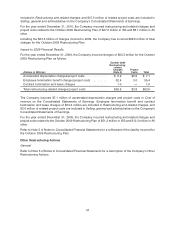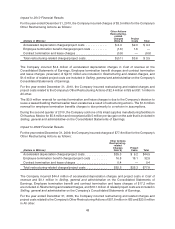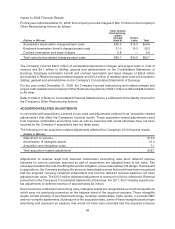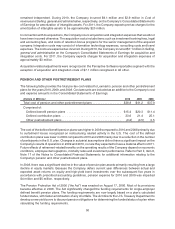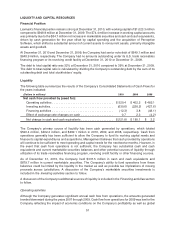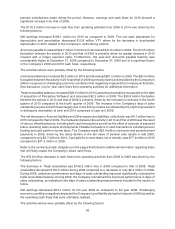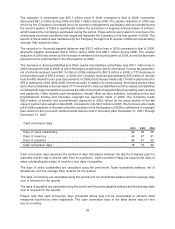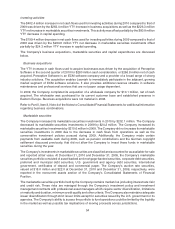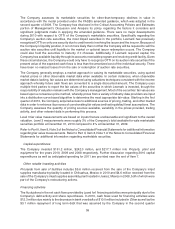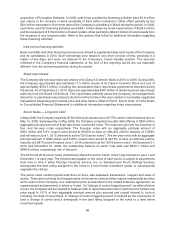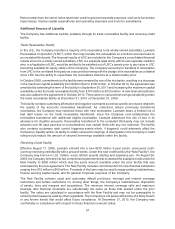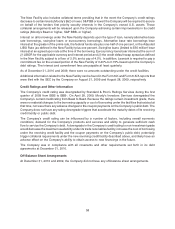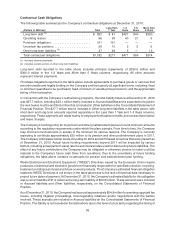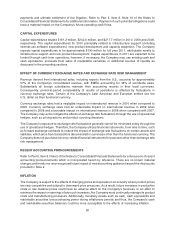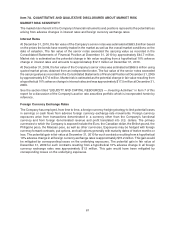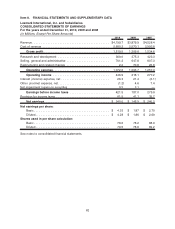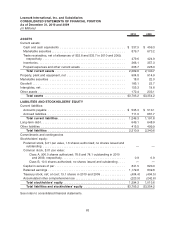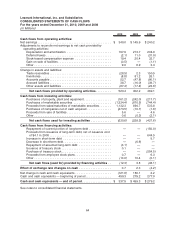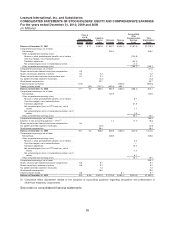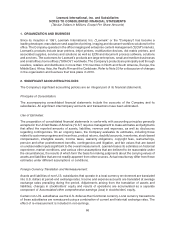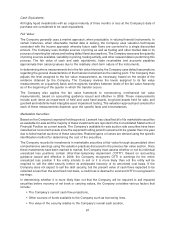Lexmark 2010 Annual Report Download - page 63
Download and view the complete annual report
Please find page 63 of the 2010 Lexmark annual report below. You can navigate through the pages in the report by either clicking on the pages listed below, or by using the keyword search tool below to find specific information within the annual report.Net proceeds from the senior notes have been used for general corporate purposes, such as to fund share
repurchases, finance capital expenditures and operating expenses and invest in subsidiaries.
Additional Sources of Liquidity
The Company has additional liquidity available through its trade receivables facility and revolving credit
facility.
Trade Receivables Facility
In the U.S., the Company transfers a majority of its receivables to its wholly-owned subsidiary, Lexmark
Receivables Corporation (“LRC”), which then may transfer the receivables on a limited recourse basis to
an unrelated third party. The financial results of LRC are included in the Company’s consolidated financial
results since it is a wholly owned subsidiary. LRC is a separate legal entity with its own separate creditors
who, in a liquidation of LRC, would be entitled to be satisfied out of LRC’s assets prior to any value in LRC
becoming available for equity claims of the Company. The Company accounts for transfers of receivables
from LRC to the unrelated third party as a secured borrowing with the pledge of its receivables as collateral
since LRC has the ability to repurchase the receivables interests at a determinable price.
In October 2008, commitments to the facility were renewed by one of the two banks, resulting in a decrease
in the maximum capital availability from $200 million to $100 million. In October 2010, the agreement was
amended by extending the term of the facility to September 30, 2011 and increasing the maximum capital
availability under the trade receivables facility from $100 million to $125 million. A new financial institution
was also added to the agreement in October 2010. There were no secured borrowings outstanding under
the trade receivables facility at December 31, 2010 or December 31, 2009.
This facility contains customary affirmative and negative covenants as well as specific provisions related to
the quality of the accounts receivables transferred. As collections reduce previously transferred
receivables, the Company may replenish these with new receivables. Lexmark bears a limited risk of
bad debt losses on the trade receivables transferred, since the Company over-collateralizes the
receivables transferred with additional eligible receivables. Lexmark addresses this risk of loss in its
allowance for doubtful accounts. Receivables transferred to the unrelated third-party may not include
amounts over 90 days past due or concentrations over certain limits with any one customer. The facility
also contains customary cash control triggering events which, if triggered, could adversely affect the
Company’s liquidity and/or its ability to obtain secured borrowings. A downgrade in the Company’s credit
rating would reduce the amount of secured borrowings available under the facility.
Revolving Credit Facility
Effective August 17, 2009, Lexmark entered into a new $275 million 3-year senior, unsecured, multi-
currency revolving credit facility with a group of banks. Under this new credit facility (the “New Facility”), the
Company may borrow in U.S. dollars, euros, British pounds sterling and Japanese yen. On August 26,
2009, the Company entered into two commitment agreements that increased the available credit under the
New Facility to $300 million which was the same amount available under the prior facility that was
terminated by the new agreement. The New Facility includes commitments from nine financial institutions
ranging from $15 million to $60 million. Proceeds of the loans may be used to repay existing indebtedness,
finance working capital needs, and for general corporate purposes of the Company.
The New Facility contains usual and customary default provisions, leverage and interest coverage
restrictions and certain restrictions on, among other things, the Company’s indebtedness, disposition
of assets, liens and mergers and acquisitions. The minimum interest coverage ratio and maximum
leverage ratio financial covenants are substantially the same as those that existed under the prior
facility. The ratios are calculated in accordance with the New Facility and may not be comparable to
similarly titled measures used by other registrants. The Company is not aware at this time of a likely breach
or any known trends that would affect future compliance. At December 31, 2010, the Company was
comfortably in compliance with respect to these financial covenant ratios.
57


